Yachting deliberately
Aino Grapin sets out how she believes the industry is on the cusp of change in embracing sustainability, where shipyards and visionary owners can work together to leave a positive impact on yachting…
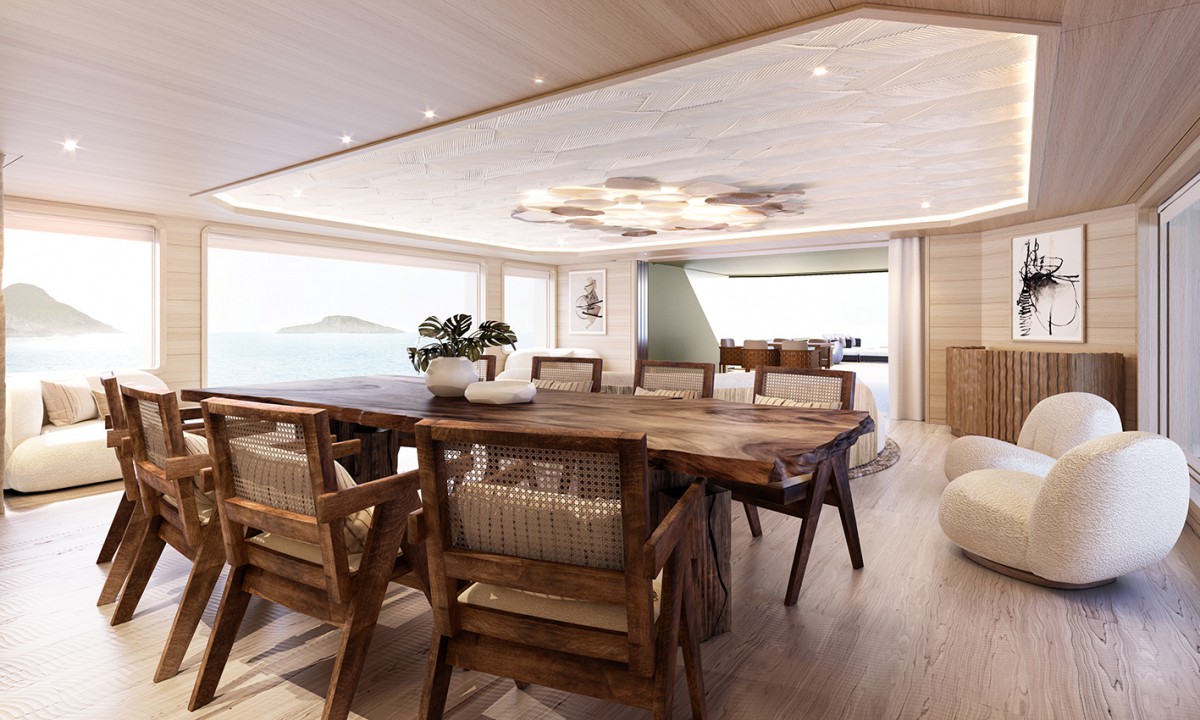
“I went to the woods because I wished to live deliberately, to front only the essential facts of life, and see if I could not learn what it had to teach, and not, when I came to die, discover that I had not lived.”
Henry David Thoreau (1817-1862)
Into the woods
In Walden, Thoreau sought to “live deliberately” – embracing simplicity, self-reliance and solitude while connecting with nature’s profound truths, far removed from society’s artificial con-straints. At first glance, his ascetic woodland existence appears diametrically opposed to the perceived opulence of superyacht ownership.
Yet consider this: the yearning to connect with the ocean’s vast transcendental beauty, the need to escape relentless social obligations, the desire to find refuge in an autonomous vessel miles from shore – all while focusing on life’s essential truths like family bonds and authentic relationships. Could these motivations, somewhat paradoxically, represent what I call “yachting deliberately”?
Although Thoreau championed civil disobedience and critiqued capitalism, this parallel isn’t as far-fetched as it may seem. After all, stretching imagination is what we do relentlessly in yacht design. And “yachting deliberately” represents an emerging philosophy I’ve witnessed increasingly among our clients at Winch Design.
This year, Winch Design will be delivering Nasiba [pictured above and below]– a groundbreaking 44-metre Cantiere delle Marche explorer featuring the industry’s first ‘health-focused’ interior, with low VOCs* and low EMFs† throughout, designed for a health and wellness-conscious family pursuing their own version of deliberate yachting. Every design element connects to natural themes, and rigorous measurements of VOCs and EMFs guide every material decision. The interior features include a dining table crafted from 350-year-old felled wood, sculptural side tables made of rush grass, wardrobes lined in pressed alpine hay and flowers, a green living wall made of preserved moss, a cork marquetery map of the world, a ‘tree of life’ feature formed from fallen trees and designed to display treasures from the family’s adventures … This represents just one example of how owners are aligning their vessels with deeply held values.
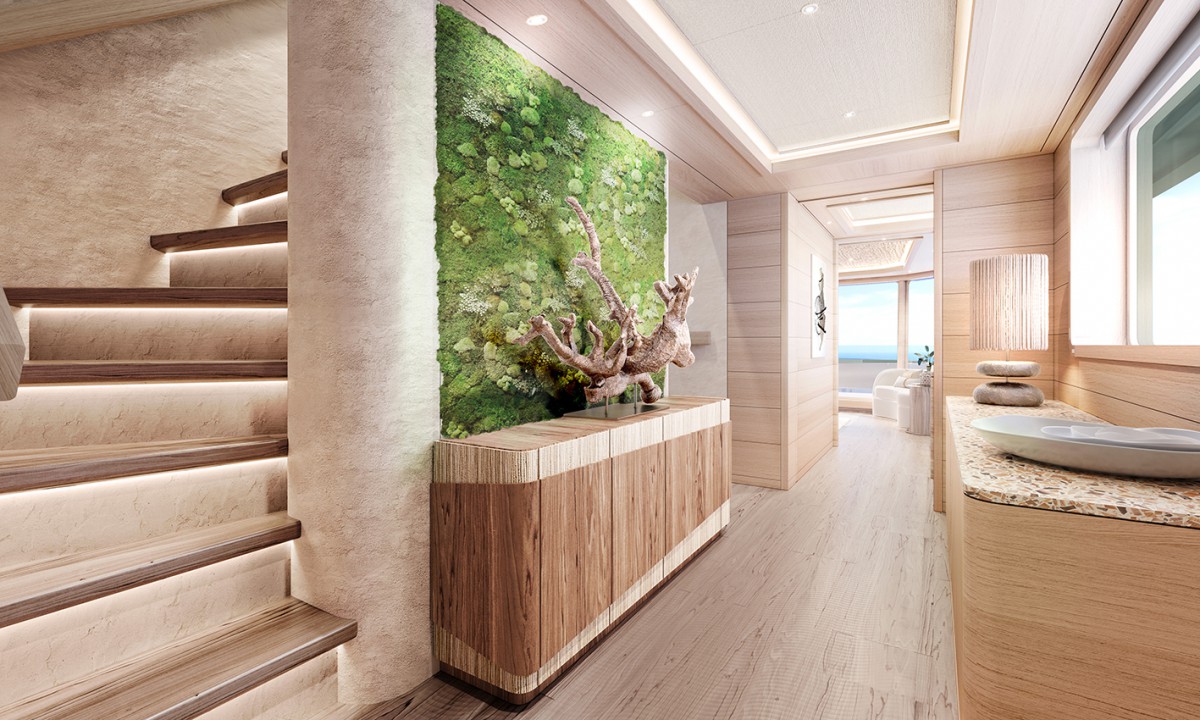
A sea change
The complexity and constant evolution of yachting is what originally drew many of us to this industry. We thrive on solving unprecedented challenges through innovation and collaboration, creating something entirely new with each project.
I’m witnessing unprecedented transformation across every facet of our world. Leadership transitions are reshaping the landscape as shipyards and brokerage firms implement succession plans, passing stewardship from industry pioneers – many leading since the 1980s – to a new generation eager to leave their mark. Industry conversations increasingly focus on legacy: what these founding leaders hope their successors will achieve and how emerging voices will honour the past while forging new paths.
Meanwhile, prominent shipyards and maritime publications are changing ownership, with fresh new shareholder perspectives poised to influence industry direction. Most significantly, our clientele continues evolving, geographically, generationally and in their fundamental aspirations for yachting.
On the horizon
No sector rivals yachting’s customer-centricity. While the art world elevates artists above collectors, haute couture tells seasonal stories regardless of individual preference and luxury automobiles offer limited personalisation, custom yachting celebrates absolute uniqueness. No two vessels are identical. At Winch Design, we embrace this philosophy to the highest degree, not ever being constrained by a house style, instead creating holistic designs – inside and out – with each client at the absolute centre of every decision.
When yacht owners occupy this central position, they naturally become custodians of yachting’s future. Every commissioned vessel adds personal DNA to the global fleet, and meaningful industry transformation requires their active participation in addressing tomorrow’s challenges.
Remarkably, stakeholders across the yachting ecosystem have already charted a comprehensive roadmap toward regenerative yachting by 2050, under the umbrella of Water Revolution Foundation. This ambitious undertaking required extensive data collection and unprecedented supply chain collaboration spanning design, construction, refit and operations. In May 2025, sixty industry CEOs formally committed to this roadmap during a pivotal conference hosted by San Lorenzo and Water Revolution Foundation in Lerici, Italy.
What once seemed an insurmountable sus-tainability challenge now has structure: robust, science-based targets across four critical areas, guiding us toward net-zero emissions and beyond – to positive ocean impact. The framework exists; now we need owners to also champion this vision and signal the race’s beginning. Not in competition against each other – I’ve witnessed remarkable collaboration on sustainability initiatives – but against time itself, racing to preserve our beloved oceans and ensure future generations can experience pristine waters under sail.
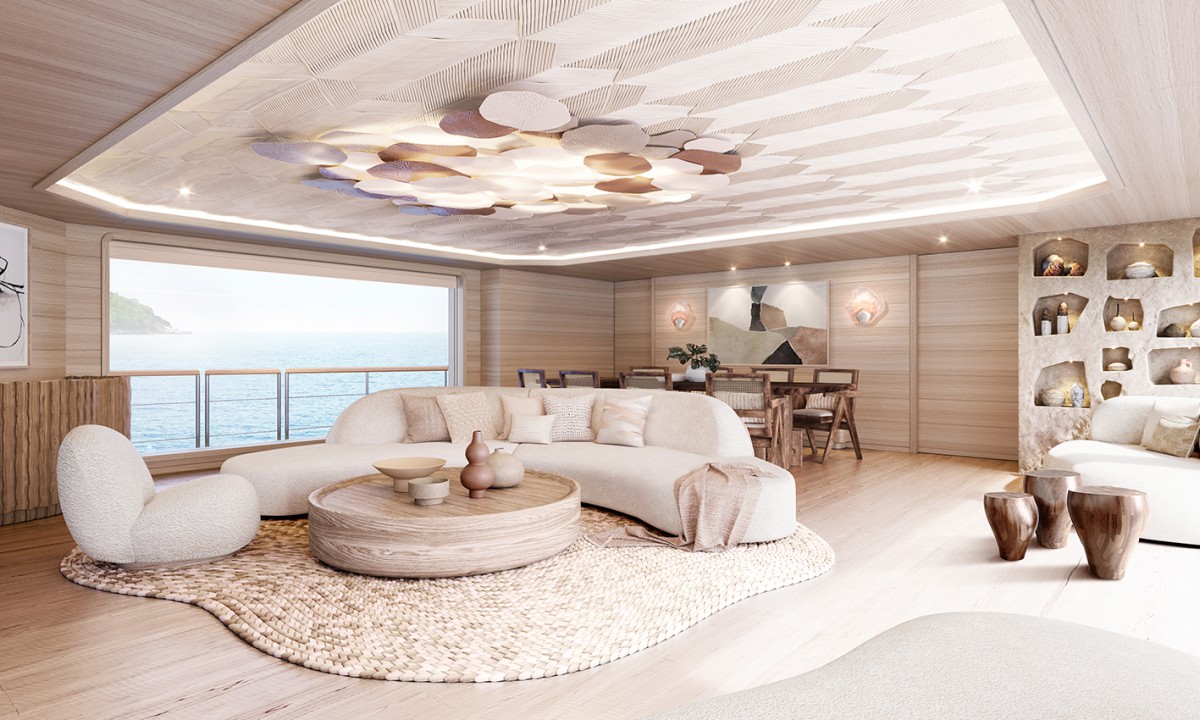
Point of singularity
As with any innovation, there will be a point of singularity – an inflection point if you will – just before technology is exponentially adopted. Many shipyard owners I am speaking to believe we are not far off from this point of singularity and they are keen to get there. So let’s see if we can bring this inflection point forward by one or two years, with visionary owners who want to leave a positive impact on yachting and on the pristine eco-systems we so enjoy exploring – deliberately.
Forward-thinking owners commissioning eco-conscious vessels send powerful signals throughout the industry, encouraging bold technological advancement and breaking frustrating circular dependencies. Revolutionary solutions already exist and are beginning to transform both yachting and broader maritime transportation. However, some innovations require extensive prototyping and infrastructure development to maintain the cruising freedom owners rightfully expect.
Enter our industry’s persistent challenge: infrastructure development awaits critical mass demand, while demand hesitates without established infra-structure. Will methanol or hydrogen refuelling networks only emerge once sufficient yacht demand exists, despite knowing these fuels will prove crucial for our sustainable future?
Like all transformative innovations, we approach a singularity point, an inflection moment before exponential adoption occurs. Many shipyard leaders I engage with believe we’re remarkably close to this threshold. Perhaps visionary owners can accelerate this inflection point by one or two crucial years.
The opportunity beckons: to yacht deliberately, with purpose and consciousness, honouring both our essential truths and our industry’s sustainable future. To embrace the profound responsibility that comes with the privilege of exploring Earth’s most magnificent marine sanctuaries. The woods Thoreau sought were already there, waiting. The sustainable future of yachting awaits our collective creation.
*Volatile organic compounds: gases emitted into the air by various products or processes
†Electro-magnetic fields
This article first appeared in The Superyacht Report – Owners Focus. With our open-source policy, it is available to all by following this link, so read and download the latest issue and any of our previous issues in our library.
Profile links
NEW: Sign up for SuperyachtNewsweek!
Get the latest weekly news, in-depth reports, intelligence, and strategic insights, delivered directly from The Superyacht Group's editors and market analysts.
Stay at the forefront of the superyacht industry with SuperyachtNewsweek
Click here to become part of The Superyacht Group community, and join us in our mission to make this industry accessible to all, and prosperous for the long-term. We are offering access to the superyacht industry’s most comprehensive and longstanding archive of business-critical information, as well as a comprehensive, real-time superyacht fleet database, for just £10 per month, because we are One Industry with One Mission. Sign up here.
Related news
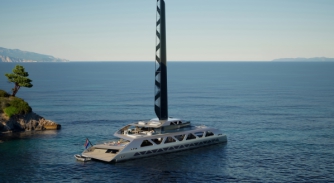
Royal Huisman to trial improved wing sail and fuel cell systems
The Dutch shipyard’s new concept aims to bridge experimental clean-energy tech and real-world yacht design with a 50-metre wing-sail catamaran
Fleet
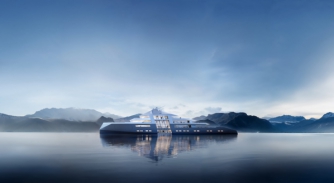
Lateral and Foster + Partners to challenge the 2,000 GT rulebook
The latest platform from the naval architecture stalwarts looks to feature attributes only found on vessels above 5,000 GT
Fleet
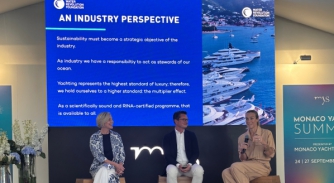
Water Revolution Foundation launches Ocean Assist Programme
Following its debut at the UN Ocean Conference (UNOC3), Water Revolution Foundation has now officially launched Ocean Assist at Monaco
Technology
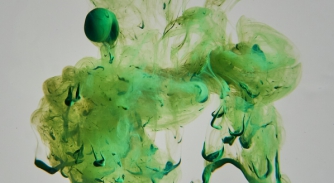
Pressure to adopt biofuels mounts as regulation bites
Lloyd’s Register’s latest Fuel for Thought report positions HVO as the most practical near-term alternative to conventional marine fuels
Crew
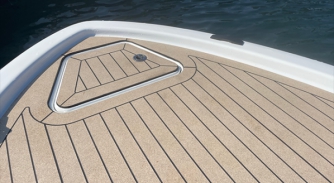
Cork – the natural choice
Cork has long been recognised for its durability and versatility in marine applications, but not always in yachting. Udo Kleinitz, business development at
Fleet
Related news
Cork – the natural choice
4 months ago
NEW: Sign up for
SuperyachtNewsweek!
Get the latest weekly news, in-depth reports, intelligence, and strategic insights, delivered directly from The Superyacht Group's editors and market analysts.
Stay at the forefront of the superyacht industry with SuperyachtNewsweek



